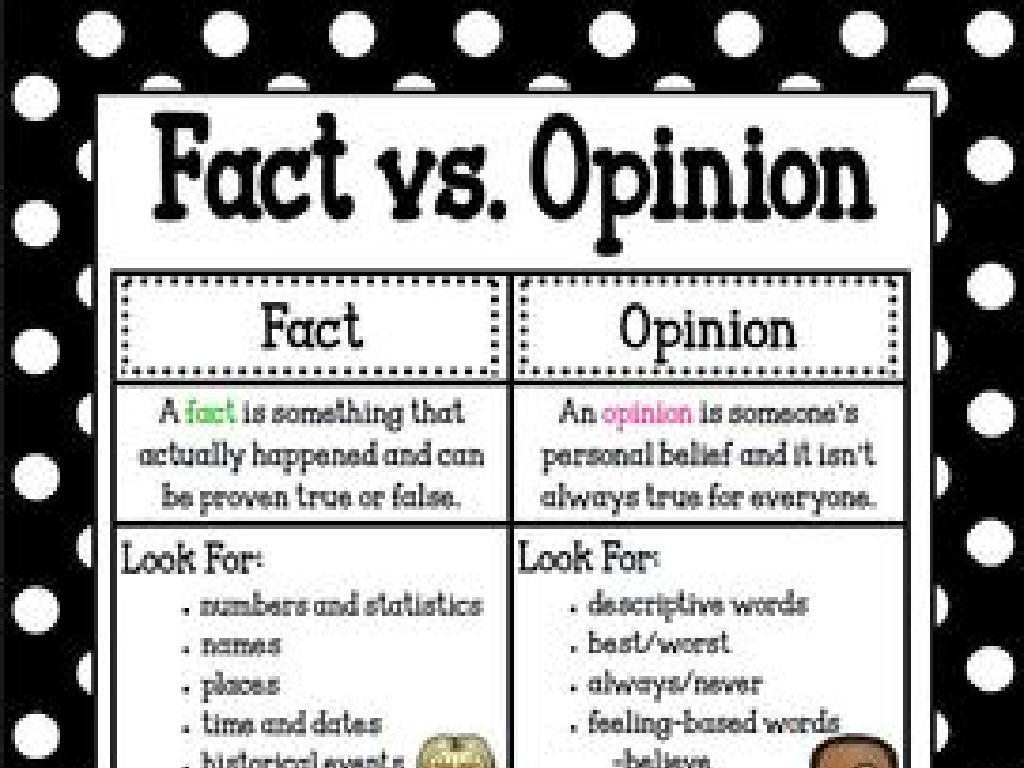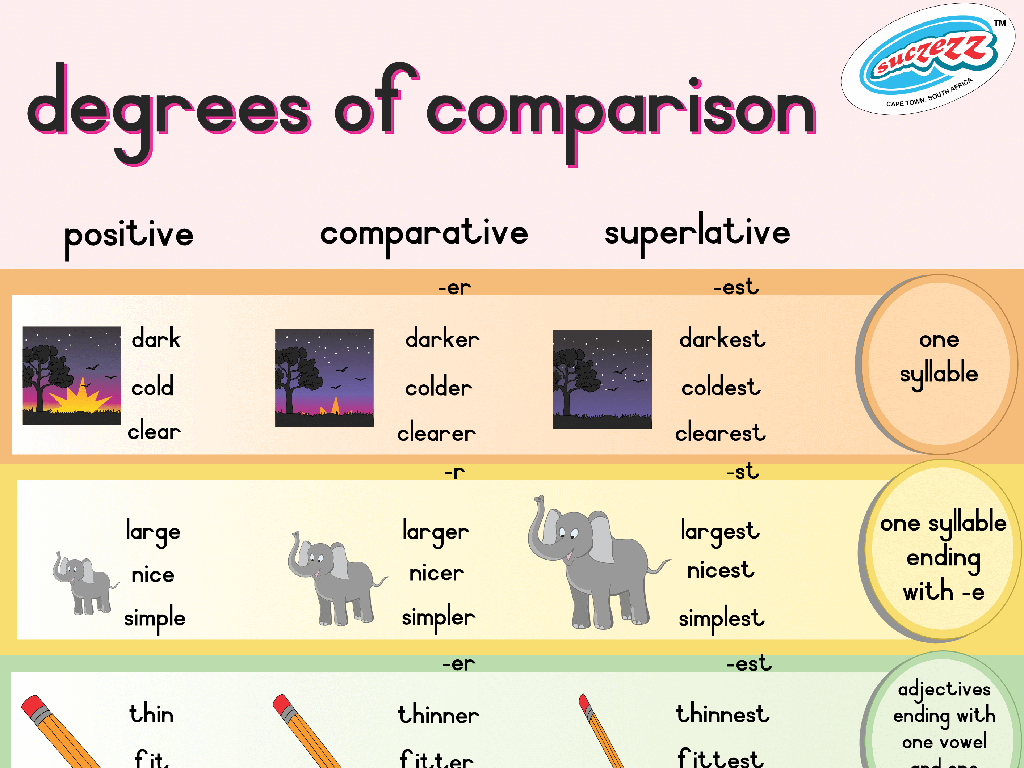The Civil War: Bull Run To The Emancipation Proclamation
Subject: Social studies
Grade: Eighth grade
Topic: The Civil War
Please LOG IN to download the presentation. Access is available to registered users only.
View More Content
The Civil War: A Nation Divided
– North vs. South conflict
– Industrial North vs. Agricultural South, differing economies and societies
– Civil War’s historical significance
– The war shaped America’s future, ending slavery and defining federal power
– Battle of Bull Run overview
– First major battle, a Confederate victory that shocked the North
– Emancipation Proclamation impact
– Lincoln’s 1863 declaration freeing slaves in the Confederacy, altering the war’s purpose
|
This slide introduces students to the complexities of the Civil War, emphasizing the ideological and economic differences between the North and the South. Highlight the Civil War’s pivotal role in American history, particularly in terms of abolishing slavery and reinforcing the strength of the federal government. Discuss the Battle of Bull Run as the first major conflict of the war, setting the stage for a long and brutal fight. Conclude with the Emancipation Proclamation, which redefined the war as a fight for human freedom and changed the course of American history. Encourage students to reflect on how these events still influence the United States today.
The Spark of the Civil War
– Triggers of the Civil War
– Disputes over slavery, states’ rights, and secession led to war.
– Fort Sumter’s role
– The Confederate attack on Fort Sumter marked the beginning of the Civil War.
– States’ rights and slavery
– The debate over states’ sovereignty vs. federal authority fueled tensions.
– Economic disparities
– The North and South had growing economic differences and interests.
|
This slide aims to introduce students to the complex causes that led to the outbreak of the Civil War. It’s crucial to discuss the multifaceted nature of the conflict, including the role of slavery, the argument over states’ rights, and the economic disparities between the industrial North and the agrarian South. The attack on Fort Sumter in April 1861 is highlighted as the immediate catalyst for the war. Encourage students to consider how these factors interplayed to create a volatile political environment. Provide examples such as the Dred Scott decision and the Missouri Compromise to illustrate the growing sectionalism. This will set the stage for understanding the progression of the war and the eventual issuance of the Emancipation Proclamation.
The Civil War: First Battle of Bull Run
– First major battle of the Civil War
– Also known as the Battle of Manassas, marked the conflict’s violent beginning.
– Significance and outcome of the battle
– Union defeat highlighted the war’s potential length and intensity.
– Public reaction to the battle
– Shock and realization of a long, brutal conflict ahead.
– Impact on war’s perception
– Shifted public expectations from a quick skirmish to a prolonged war.
|
The First Battle of Bull Run, also known as the Battle of Manassas, was a wake-up call for both the Union and the Confederacy, showing that the war would be longer and more brutal than initially thought. The Union’s defeat shattered the North’s hope of a swift victory, while the South gained confidence. Public reaction ranged from disbelief to a grim acceptance of the war’s reality. This battle significantly altered the nation’s perception of the Civil War, setting the stage for the conflicts that followed. Discuss the importance of understanding early battles to comprehend the full scope of the war. Encourage students to consider how initial battles can shape the course of a conflict.
War Strategies: Union vs. Confederacy
– Compare Anaconda Plan vs. Confederate strategies
– Union’s Anaconda Plan aimed to suffocate the Confederacy’s resources, while the Confederacy sought to defend its territory and gain foreign support.
– Geography’s impact on military tactics
– Terrain and landmarks shaped battle plans and troop movements.
– Significance of naval blockades
– Blockades were used to cut off supply lines and weaken the enemy’s economic strength.
– River control in military strategy
– Controlling rivers allowed for movement of troops and supplies, and was key to strategic advantage.
|
This slide aims to provide students with an understanding of the different strategies employed by the Union and the Confederacy during the Civil War. The Anaconda Plan was the Union’s strategy to encircle and squeeze the Confederacy’s trade routes, while the Confederacy aimed to protect its land and seek assistance from European nations. Geography played a crucial role in military decisions, influencing where battles were fought and how armies navigated the terrain. Naval blockades were a tactic to disrupt the Confederacy’s trade and supply lines, while controlling rivers like the Mississippi was vital for transporting troops and supplies. Encourage students to think about how these strategies might have affected the outcome of the war and to consider the advantages and disadvantages of each side’s approach.
The Path to Emancipation
– Lincoln’s shifting stance on slavery
– Initially moderate, Lincoln’s views evolved to support abolition as a war aim.
– Slavery’s impact on the Civil War
– Slavery was central to the South’s economy and a root cause of the conflict.
– Steps leading to Emancipation Proclamation
– Lincoln used his war powers to issue a preliminary proclamation after Union victory at Antietam.
– Emancipation Proclamation significance
– It declared freedom for slaves in the Confederacy, changing the war’s moral purpose.
|
This slide explores the journey towards the Emancipation Proclamation, highlighting Abraham Lincoln’s changing perspective on slavery, which was initially cautious but became more abolitionist as the Civil War progressed. Emphasize the importance of slavery as a fundamental cause of the war and how its abolition became a key Union objective. Discuss the events leading up to the issuance of the Emancipation Proclamation, including the crucial Union victory at the Battle of Antietam, which provided the momentum needed for Lincoln to take decisive action. The Emancipation Proclamation’s announcement marked a turning point in the war, redefining it as a fight not just to preserve the Union, but also to end slavery. Encourage students to consider the moral and strategic implications of this historic decision.
The Emancipation Proclamation Explained
– Definition of the Proclamation
– A historic order by Lincoln freeing slaves in Confederate states
– Impact on the war and slaves
– It bolstered the Union’s moral cause and allowed freed slaves to join the army
– Limitations of the Proclamation
– Did not apply to border states; symbolic rather than legal freedom in some areas
|
The Emancipation Proclamation, issued by President Abraham Lincoln on January 1, 1863, declared the freedom of all enslaved people in Confederate states. While it did not immediately free a single slave, it fundamentally transformed the character of the Civil War by adding moral force to the Union cause and undermining the Confederacy’s war efforts. Moreover, it allowed African Americans to enlist in the Union Army, contributing significantly to the North’s eventual victory. However, the Proclamation had its limitations; it did not apply to slave-holding border states that were loyal to the Union, and in areas under Confederate control, it could not be enforced until those areas were captured by Union forces. This slide will help students understand the nuanced impact of the Emancipation Proclamation on the Civil War and American society.
Impact of the Emancipation Proclamation
– Union war goals transformed
– Shift from just unifying to abolishing slavery
– Global reaction to the Proclamation
– Europe’s view shifted, supporting the Union’s moral high ground
– Pathway to the 13th Amendment
– Laid the groundwork for abolishing slavery nationwide
|
The Emancipation Proclamation was a pivotal moment in the Civil War, altering the Union’s war aims from merely preserving the nation to also ending slavery. This shift had significant implications, including changing international perceptions, particularly in Europe, which saw the Union cause as morally superior and thus less likely to support the Confederacy. Furthermore, the Proclamation set the stage for the 13th Amendment, which would constitutionally end slavery in the United States. In class, discuss the broader impacts of the Proclamation on the war and society, and how it shaped the course of American history.
Role-Play Debate: Emancipation Proclamation
– Divide into Union & Confederate groups
– Debate the Proclamation’s significance
– Reflect on the Proclamation’s impact
– How did the Proclamation alter public opinion and the war’s focus?
– Discuss the change in war’s course
– Consider the shift from a fight for union to a fight for freedom.
|
This class activity is designed to engage students in a role-play debate to understand different perspectives on the Emancipation Proclamation. By dividing the class into Union and Confederate supporters, students will explore the varied reactions to this pivotal document. The debate should focus on its significance, particularly how it changed the public’s view of the war and its goals. After the debate, lead a reflection session to discuss how the Emancipation Proclamation shifted the war’s focus from merely preserving the Union to also abolishing slavery. Encourage students to consider the broader implications of this shift for the outcome of the war and for American society. Possible activities: writing a reflective essay, creating a poster that represents different viewpoints, or composing a journal entry from the perspective of a historical figure at the time.






